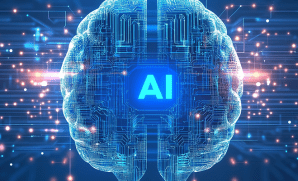Data and AI: Essential skills every Big data architect needs
Publish Date: April 21, 2021In the 90s, the Matrix series predicted that everything is data.
With extracting value from data and data science becoming critical global topics, enterprises that leverage Big Data, AI, and machine learning to address complex business challenges have to build confidence in their data. A specialized position – Big Data Architect – has gained currency in these organizations. This architect’s data literacy should be in sync with the evolving roles and responsibilities, allowing them to understand business requirements well.
Data, data everywhere…and no one to manage it?
With the daunting volume of data comes the proliferation of roles and skills required to make sense of it. A Big Data Architect takes on the challenge of building efficient and cost-effective big data solutions. With increasing adoption comes the question of designing the data for real-time use aligned with the technology, a central aspect of a Big Data Architect’s job. The Big Data Analyst is a crucial link between the technology and business operations identifying its pain points.
The skillset needed for a Big data architect today
The majority of companies move towards achieving serverless existence and go 100% cloud-based, as cloud services are affordable and effective. Many companies have multi-vendor architectures for obtaining the best results with platform providers like Microsoft Azure, AWS, Google Cloud, and many more dependable names in the game. To pull everything together in an orderly fashion, Big Data Architect needs to bring to the table the following skills.
- It is almost a given that they must know how to handle cloud computing and have competence in architecting. Expertise in data warehousing and mining should be non-negotiable.
- Being able to recognize patterns clustering for handling data and text mining is essential.
- An extremely creative mind who can visualize data in a business-centric manner is paramount for coming up with the proper structure. A keen eye and attention to detail while focusing on the big picture can make all the difference in approaching a problem.
- Should necessarily have a good grip on the inner workings of the enterprise and the industry vertical that it belongs to. Sub-industry-verticals may have to be addressed differently, which needs to be kept in mind.
- It is also vital to understand that a specific dataset can be used to arrive at solutions in multiple ways. Testing those hypotheses is an integral part of arriving at the optimal solution through systematic A/B testing.
It takes time to inculcate the patience to look at messy data and find insights from it – like finding a needle in a haystack. The pace at which new AI solutions are emerging and available options to make an idea feasible shine a light on what is likely to happen in the future. Since analytics help enhances the business value chain, having a knack for unearthing possibilities is critical. A strong background in Hadoop and SQL will help aspiring Big Data Architects take the next crucial step in their careers and mold their business-centric design abilities to create a culture of healthy competition with their market peers.


















